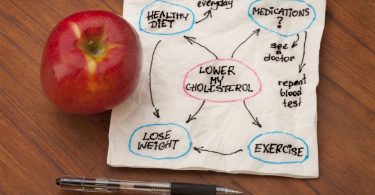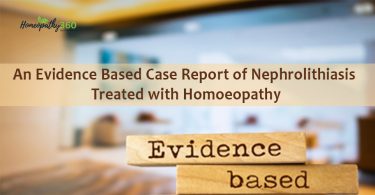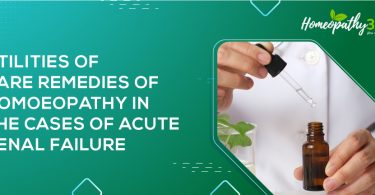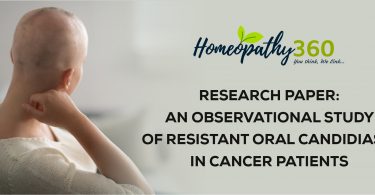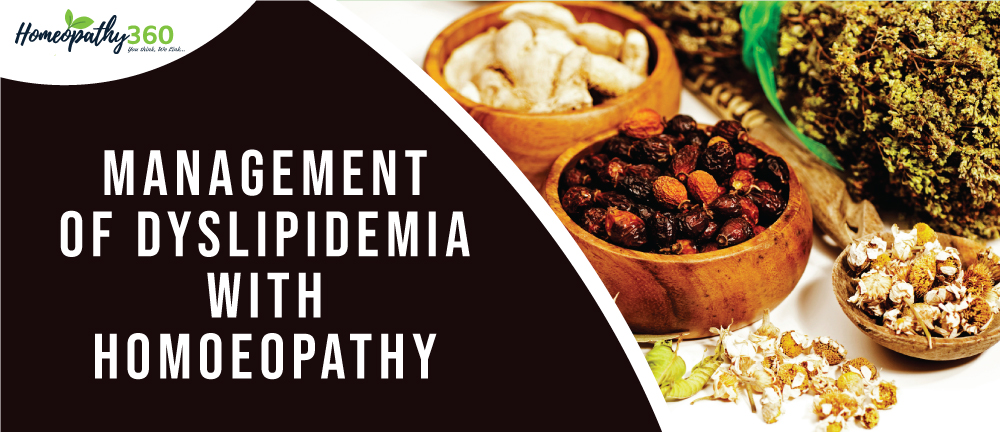
Management of Dyslipidaemia with Homoeopathy
Abstract: The importance of high serum total cholesterol and high level of low-density lipoprotein cholesterol, as a risk factor for coronary artery diseases is well established. Statin is the first line of treatment for dyslipidaemia in modern medicine, and there are known unwanted effects of statin therapy. This study reviews the existing information available in homoeopathy for managing dyslipidaemia. In addition, efforts were made to search authoritative texts of authors, such homoeopathic Materia Medica, etc. Medicines commonly used in materia medica and drugs of Indian origin were noted. There are positive leads generate effectiveness/efficacy of Homoeopathy.
Keywords: arteriosclerosis, atherosclerosis, cholesterol, dyslipidaemia, homoeopathy, lipid.
Abbreviations: very low density lipoprotein (VLDL), low density lipoprotein (LDL), high density lipoprotein (HDL), cardiovascular diseases(CVDs), coronary artery disease(CAD), peripheral artery disease (PAD).
Introduction:
It is the disorder of metabolism of lipoprotein. These lipoprotein contains lipids (mainly triglycerides, cholesterol) surrounded by covering of phospholipid.1 Four main types of phospholipids are present in blood, namely chylomicrons, very low density lipoprotein (VLDL), low density lipoprotein (LDL), high density lipoprotein (HDL).1 Dyslipidaemia commonly characterized by increase plasma level of cholesterol and triglyceride accompanied by reduce level of HDL.1 Dyslipidaemia is a chief risk factor for cardiovascular diseases(CVDs) and the major cause of death worldwide.1
Dyslipidaemia occurs when person has abnormal level of lipids in blood.2 Which may be Hyperdyslipidaemia or Hypodyslipidimia. Term “dyslipidaemia’’ was introduced in 2006 which means derangements of one or more than one lipoproteins in blood such as triglycerides, LDL and Cholesterol. Here LDL levels were directly proportionate to risk factor of heart, whereas HDL levels were inversely proportionate to risk factors.2
Cause and risk factors:
The majority of patients with dyslipidaemia have some combination of genetic predisposition and environmental contribution.2 There are many causative factor of dyslipidaemia ranging from genetic disorder to life style disorders. The cause of dyslipidaemia can be classified in primary or secondary.2
In primary dyslipidaemia there are abnormal level of lipid caused by genetic inherited from one or both parents. It is also known as familial dyslipidaemia.
Secondary dyslipidaemia is more common, occurs due to various factors including life style or certain medical condition such as alcohol abuse, liver diseases, cigarette smoking, uncontrolled diabetes ,poor or high fat intake ,lack of exercise,hypothyroidism.2
Sign and symptom:
Most of people having dyslipidaemia are asymptomatic unless it is very severe. It is accidently diagnosed during a routine blood test or a test for other diseases.2 Severe form of dyslipidaemia can cause coronary artery disease(CAD) and peripheral artery disease (PAD) and some other conditions.2
High LDL cholesterol level is associated with coronary artery diseases, which is blockage in the artery of the heart, and peripheral artery diseases, which is blockage in the artery of legs. So both CAD and PAD can causes serious health problem including heart attack and stroke.2
Some common symptom of these conditions are as below:
1. Pain in legs when standing or walking.
2. Drawing type of chest pain extending to neck and left arm.
3. Tightness in the chest with difficulty in breathing.
4. Indigestion and pyrosis.
5.Anxiety with palpitation in chest.
6. Nausea and vomiting with cold sweating.
7. Swelling of lower extremities & Fainting.
Management of dyslipidaemia:
Lipid-lowering therapies have a key role in the line of treatment for primary and secondary prevention of cardiovascular diseases (CVDs).2
Non-medicinal management: Diet, exercise and lifestyle modification are central to management in all the cases.2 Dietary modifications include:
1.Should reduce intake of saturated and trans-unsaturated fat.
2. Increase consumption of cardio protective food such as vegetables, fish, pulses, legumes etc.
3.Increase food containing lipid lowering nutrients such as N-3 fatty acids, dietary fibres.
4. Responds of dietary management gradually appears within 3 to 4 weeks.
Medicinal Management:
ALLOPATHIC MANAGEMENT: Lipid lowering medicines in combination form is given to balance the derange quantity of lipid in blood.2
HOMOEOPATHIC MANAGEMENT OF DYSLIPIDAEMIA
Homoeopathic treatment focuses on the patient as a person as well as his pathological condition. Homoeopathic medicine for dyslipidaemia are selected after a full analysis, evaluation and individualization of the case. Some of homoeopathic medicines having high therapeutic value for dyslipidaemia are discussed here:
1. Allium sativum: Arterial hypotension.3 Reduce high blood pressure caused due to high cholesterol (vasodilatory properties).3 Leaping beats of the heart.4
2. Arsenicum album: Palpitation, pain, dyspnoea, faintness.3 Irritable heart in smokers and Tobacco-chewers.3 pulse more rapid in morning.3 Dilatation. Cyanosis. Fatty degeneration.7Angina pectoris with pain in neck and occiput.3violent and insupportable throbbing of the heart, chiefly when lying on the back, and especially at night.4 irregular beatings of the heart, sometimes with anguish.4cramps in the heart.4Heart-beats irritable. Palpitation with anguish, cannot lie on back;<going upstairs.4Palpitation and trembling weakness after stool; must lie down.4,9 Palpitation after suppressed herpes or foot-sweat.4Hydropericardium.4praecordial anxiety, oppression in region, slow with weak pulse.9
3.Aurum metallicum: Sensation as if the heart stopped beating for two or three seconds, immediately followed by tumultuous rebound, with sinking at the epigastriumpalpitation.3Pulse rapid,feeble,irregular.Hypertrophy.3High blood pressure valvular lesions of arterio- scleroticnature.3Anxious palpitation of the heart, from congestion of the chest.4Beatings of the heart, irregular, or by fits, sometimes with anguish and oppression of the chest.4 Pain in heart region extending down left arm to fingers.4Floundering heart. when walking, the heart seems to shake as if it were loose.4Sensation as if the heart still, palpitation compels him to stop.4Aortic disease, violent palpitation; at puberty.5Carotids and temporal arteries throb visibly, feels loose on walking.5Heart bruised, sore, suppressed foot sweat.5 Fatty degeneration.7,8Stitches immediately over; in region deep inspiration.9Burning with pricking, drawing cutting type of pain.9opression.compelling deep breathing, which relieves.9
4. Baryta muriatica:Arterio-sclerosis.3 Hypertension and vascular degeneration.3,5Increased Tension of pulse.3Throbbing of the heart accelerated.4 Palpitation of the heart.4Heart beats irregular, pulse scarcely perceptible.4
5.Cactus grandiflorus: Endocarditis with mitral insufficiency together with violent and rapid action.3Acts best in the incipiency of cardiac incompetence. Heart weakness of arterio-sclerosis.3 Tobacco heart. Violent palpitation; worse lying on left side, at approach of menses.3Angina pectoris, with suffocation, cold sweat, and ever-present iron hand feeling.3,7Pain in apex, shooting down left arm. Palpitation, with vertigo;dyspnoea,flatulence.3Constriction; very acute pains and stitches in heart; pulse feeble, irregular, quick, without strength.3Endocardial murmurs, excessive impulse, increased Precordial dullness, enlarged ventricle.3Low blood pressure.3Sensation as if heart turned over.4Pain deep in heart Like a jerking body, frequently repeated.4Death-like feeling at heart and round to left back.4Aneurism.Atheromatousarteries.4Stitches in heart.5Irregular and intermittent action, after forceps delivery.5pulsations increase on holding the breath.5Pericarditis.6 Pains shooting into left arm, oedema and quick ,tense, hard pulse, with the constrictive sensation.6Pains increase gradually and subside gradually.6Palpitation of the heart: day and night; worse when walking and lying on left side; at approach of menses.7,8Sensation of constriction in the heart as if an iron hand prevented its normal movement.8 Palpitation at intervals; after a meal, with an interval, during which he felt as if going to be ill.9
6.Calcarea carbonica: Palpitation at night and after eating.3 Palpitation with feeling of coldness, With restless oppression of chest.3,5after suppressed eruption.3Sometimes with anxiety and trembling movements of the heart.4Shootings,pressure,and contraction in the region of the heart.4Pricking shootings in the muscles of the chest.4Anxious dread of heart disease.6Nervous palpitation, dyspnoea and headache, worse on ascending, after eating, at night; with anguish; inclination to take deep breaths; vertigo; cold lower extremities. copious menstruation.6painful pressure, anxiety.9stitches which prevent breathing and leave aching.9
7.Crataegus oxyacantha: Cardiac dropsy.3Fatty degeneration. Aortic disease. Extreme dyspnea on least exertion, without much increase of pulse.3Pain in region of heart and under left clavicle.3Heart muscles seem flabby, wornout.3Cough. Heart dilated; first sound weak.3Pulse accelerated, irregular, feeble, intermittent.3 Valvular murmurs, angina pectoris.3Cutaneous chilliness, blueness of fingers and toes; all aggravated by exertion or excitement.3Sustains heart in infectious diseases.3Faintness and collapse. Heart failure in hypertrophy and valvular disease.4Heart collapse in typhoid and heart dropsy.4Weak, with oppression, stitches and insomnia.5
8.Crotalus horridus: Action feeble, pulse tremulous.3Palpitation,especially at menstrual period.3Trembling feeling in the heart(apoplexy).3Much pain in heart, through left shoulder-blade and down left arm.4Palpitation with sore pain in and about heart; feelings as if heart tumbled over.4Heart tender when lying on left side .Pulse hardly perceptible.phlebitis;varicosis;varicocele.4Heart Weak, trembles; loose, turns over.5 Palpitation during menses.5Heart tender when lying on left side.5palpitation,with sensation as if the heart tumbles about.9Feeble action. Tenderness in morning when lying on left side.9
9. Cuprum metallicum: angina pectoris. Slow pulse; or hard, full and quick.3 Palpitation, precordial anxiety and pain.3 Fatty degeneration.3 spasm of heart.4 Pulse very changeable; imperceptible; small; soft.4 angina with asthmatic symptoms and cramps, Palpitation, before Menses.5,7Dullness in precordial region on percussion, boring in precordial region.9
10. Glonoinum (Glonoine): Labourious action.3,4Fluttering. Palpitation with dyspnoea.3Cannot go uphill. Any exertion brings on rush of blood to heart and fainting spells.3Throbbing in the whole body to finger-tip.3Violent action of the heart, distinct pulsation over the whole body, especially in back of neck and head.4,8Excessive throbbing of heart; pulse rapid and forceful; throbbing in vessels of neck, pulsating headache.6,7Stooping causes pain in cardiac region; blood rushes to heart and mounts to head; stitches from heart to back; worse lying on left side; better on right side; must have head high.6Cerebral or alternate congestion of the heart.7Heaviness and disagreeable feeling.9Heat,weakness in praecordia.9
11. Iodium: Heart Feels squeezed.3,9 Myocarditis.3,5Painful compression around heart.3Feels as if squeezed By an iron hand followed by great weakness and faintness.3,5Palpitation from least exertion. Great precordial anxiety, obliging him to constantly change his position.4Tachycardia.3,5,7Feeling of vibration or purring over heart.5Pulsation in large arterial trunks.5Pressure in region, rapid action. precordial anxiety causing constant change of posterior.9
12. Kalium carbonicum: Sensation as if heart were suspended.3Palpitation and burning in heart region.3Weak, rapid, pulse; intermits, due to digestive disturbance.3Threatened heart failure.3Burning in heart region.5Heart pains extend to left scapula. Violent palpitation, shakes the whole body: throbbing extending to tips of fingers and toes.5Cardiac degenerations.5Arrhythmia.5Pulse;small,soft,variable;intermittent or dicrotic.5Seems to hang by a thread.5,7Heartbeats intermits; action irregular, tumultuous weak; stitches through to scapula.8Sticking in precordial region, burning in region, intermittent beats of heart.9
13. Lachesis mutus: Palpitation, with fainting spells.3,5 especially during climacteric. constricted feeling causing palpitation, with anxiety.3Cyanosis.3,5Irregular beats.3heart feels too large for the cavity; can be a no pressure on throat or chest.4cyanosis neonatorum, carditis; metastatic, senile arteriosclerosis.5 Restless, trembling, anxiety about the heart.5Heart; weak; turns over or too big as if, or as if hanging by a thread.5Rheumatism of heart, late stage.6As if heart were too large for the chest; horrible smothering feelings about the heart awakens from sleep and compels him to leave the bed; dread of going to sleep again; cannot bear pressure on throat; numbness of left arm.6Hydropericardium and hydro-thorax; urine dark, almost black and offensive.6Palpitation:day and night; worse when walking and lying on left side; at approach of menses.7Heart feels too large for the cavity; can bear no pressure on throat or chest.8Cramp-like pain in precordial region, causing palpitation with anxiety.9Pressure about heart during fever, constrictor of heart.9
14. Lithium carbonicum: Rheumatic soreness in the cardiac region.3,4,8 Sudden shocks and jerks in the heart (angina pectoris).3Throbbing,dull stitches in the cardiac region.3,4Pain in the heart before menses, associated with pain in the bladder, before micturition; better, after. Trembling and fluttering of heart brought on by mental emotion; extending to the back.3,5,8Valvular deficiencies.6,8Cardiac pains on bending forward and relieved by urinating.6 < stooping, with pains in limbs; finger joints tender and painful, worse from mental agitation.8
15 Plumbum metallicum: Cardiac weakness.3pulse soft and small, dichrotic. Wiry pulse, cramp-like constriction in peripheral arteries.3Ebullition in chest, with anxiety at precordium, and perceptible palpitation.4 painful constriction of peripheral arteries. Hypertrophy with parenchymatous nephritis.9
16. Strophanthus hispidus: Pulse quickened.3Heart’s action is weak, rapid, irregular, due to muscular debility; and insufficiency.3cardiac pain.3stitches and twitches at apex beat.4,5weak,aching or anguish at sense of lively action.5chronic; nervous palpitation, and arrest of breathing.5pulse;rapid,alternating with slow; weak, small irregular. cardiac dyspnoea.5
17. Strontium carbonicum: Arterio-sclerosis. High blood pressure with flushed face pulsating arteries.3Dull, intermitting pressure in precordial region.4Violent beating of arteries and of heart.4Heart feels smothered, heart block.5
Conclusion
Homoeopathy is based on the principal of simila, means a picture of a case is erected by proper case taking and individualisation of person and then it is matched with the drugs available in materia medica. In addition to it, prescription can be based upon organ affinity or by therapeutic approach. Therapeutic approach is followed in cases where individualisation is not possible due to certain reasons.
References:
1. Longo DL,Fauci AS, Kasper DL, Fauci AS, Hauser SL, Longo DL, Jameson JL,Loscalzo J.eds.Harrison’s Principles of Internal Medicine,19th ed. New York:McGraw-Hill;2015.
2. Davidson Stanley. Principles & Practice of Medicine.22nd ed. Philadelphia:Elsevier:2014.
3. Boericke W. New Manual Of Homoeopathic Materia Medica. New Delhi: B.Jain Publishers(P)Ltd;2011.
4. Clarke JH,A Dictionary Of Practical Materia Medica.New Delhi:B.Jain Publishers Pvt.Ltd.;2015.
5. Phatak SR.,Materia Medica Of Homoeopathic Medicines.New Delhi:B.Jain Publishers(P)Ltd;2007.
6. Farrington EA.,Comparative Materia Medica.New Delhi:B.Jain Publishers(P)Ltd;2017.
7. Allen HC.Allen’s Keynotes Rearranged and Classical with Leading Remedies of the Materia Medica and Bowel Nosodes. New Delhi: B.Jain Publishers(P)Ltd;2008.
8. Nash EB. Leaders in Homoeopatic Therapeutics. New Delhi: B.Jain Publishers Pvt.Ltd.;2013.
9. Allen TF. Handbook Of Materia Medica and Homoeopathic Therapeutics. New Delhi: B.Jain Publishers Pvt.Ltd.;2003
About the author
Dr Shishir Mathur, Professor (Department of Physiology and Biochemistry) and Vice Principal, Dr. MPK Homoeopathic medical College, Hospital & Research Center, ( Constituent College of Homoeopathy University ), Jaipur, Rajasthan.
Dr Ruchi Mehta, Associate Professor(Department of Gynaecology & Obstetrics), ,Dr. MPK Homoeopathic medical College, Hospital & Research Center, ( Constituent College of Homoeopathy University ), Jaipur, Rajasthan.
Mr. Rohan Ganpatot (Jain), Intern,Dr. MPK Homoeopathic medical College, Hospital & Research Center, ( Constituent College of Homoeopathy University ), Jaipur, Rajasthan.


